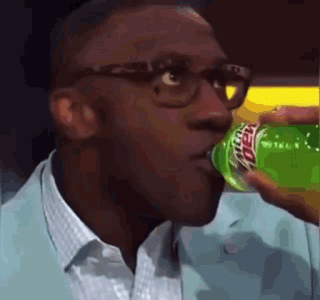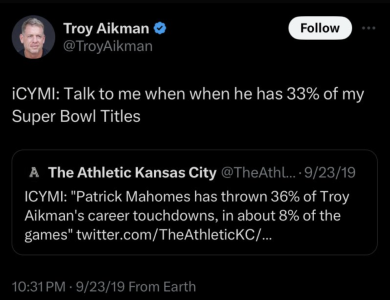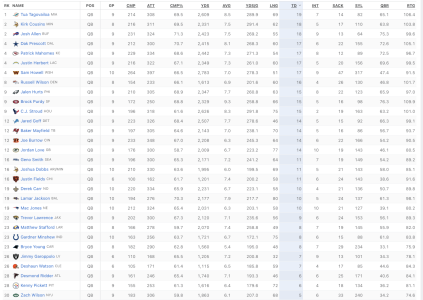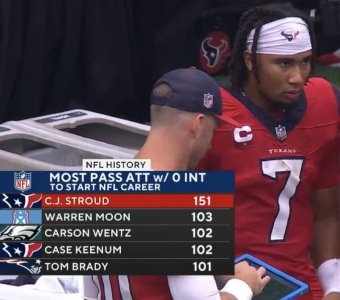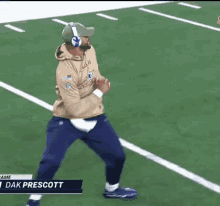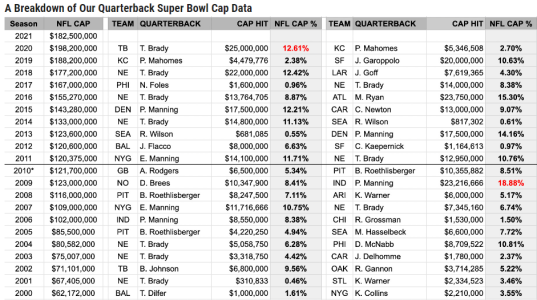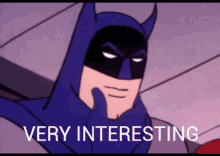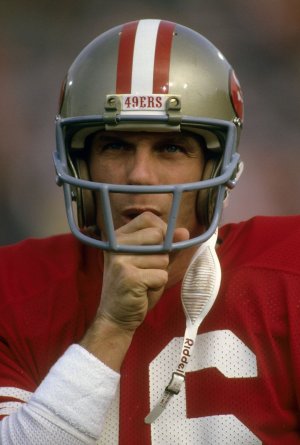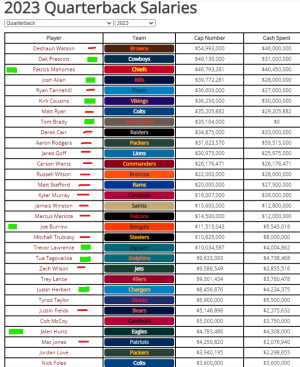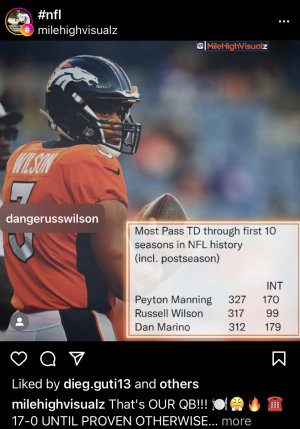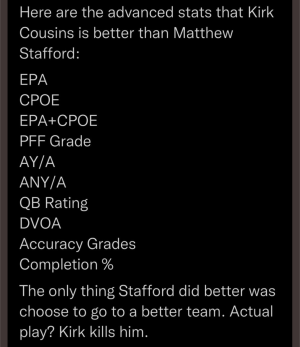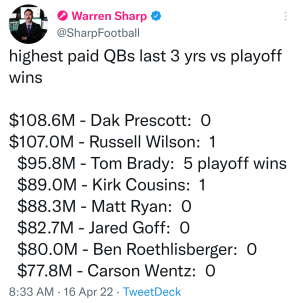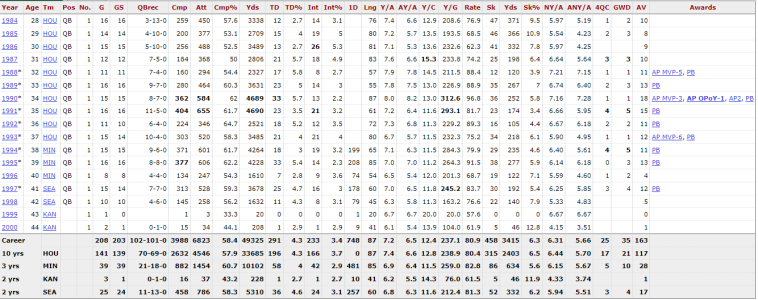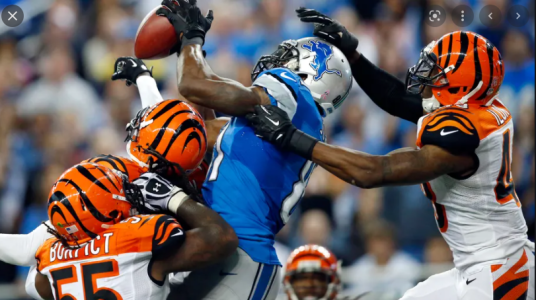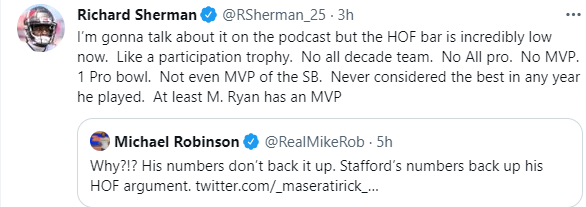Teams with established coach-quarterback combinations have dominated unestablished counterparts in the past three Thursday night matchups, winning by 35 points on average. If time together factors into these early-season games played on short weeks, the Indianapolis Colts should love their chances against the Houston Texans in Week 6.
While Colts coach Chuck Pagano and quarterback Andrew Luck are in their third season together, the Texans' Bill O'Brien and Ryan Fitzpatrick are just getting started. There is also the not-so-small detail of Luck's talent advantages over Fitzpatrick and most opposing QBs. That talent is translating to the stat sheet in new ways this season, giving 2014 the appearance of a statistical breakout season for Luck -- one that could narrow his perceived gap between potential and production.
Through five games, Luck is on pace for 5,174 yards passing with 45 touchdown passes -- totals that would obliterate his previous career highs. A look inside the numbers shows a shift in playing style that could enhance Luck's standing in the eyes of evaluators, coaches and players. We might be witnessing the breakout season from Luck that most around in the league have been expecting from him.
Going into the season, Luck ranked right behind Peyton Manning, Aaron Rodgers, Tom Brady and Drew Brees in the top tier of quarterbacks as voted by a panel of 26 coaches and personnel evaluators for our QB Tiers project. The ranking outpaced Luck's production. The 14 panelists who placed him in the highest of five possible tiers typically pointed to the prominent role Luck played in helping the Colts post an 11-5 record twice without much help from his defense or running backs.
Luck tossed 23 touchdown passes in each of his first two seasons. His interception total dropped from 18 as a rookie to nine last season. Luck continued to provide significant value as a runner. That rushing value -- 34.6 expected points added over his first two seasons, which trailed only the total for Cam Newton -- explained why Luck ranked eighth among 33 qualifying quarterbacks in Total QBR (63.

over that span, even while his 81.5 passer rating lagged at 22nd.
Through five games this season, Luck is sixth in QBR (76.5) and seventh in passer rating (100.0). His passing production has spiked while his rushing contributions have fallen sharply.
Where Luck has been better
Quarterbacks with the ability to succeed as pocket passers over a high volume of plays tend to have staying power. They're the ones able to process information quickly enough to make the right decisions. They're the ones coaches, players and evaluators respect the most.
Seattle Seahawks free safety Earl Thomas nailed it Monday night when he said Luck is doing a good job staying patient in the pocket, feeling what is happening around him and remaining level-headed. Luck is completing a career-high 68.7 percent of his passes from inside the pocket. His sack rate on these plays has dropped to 2.5 percent from 5.5 percent over his first two seasons. His QBR score from inside the pocket has surged to 81.6, which ranks fifth in the league and far outpaces his 53.0 from 2013.
A couple of plays against Baltimore in Week 5 provide examples. On the Colts' first drive, Luck took the shotgun snap and stepped up in the pocket to avoid outside linebacker Courtney Upshaw. He held the ball long enough for Reggie Wayne to get 18 yards deep on his route. Luck delivered the ball as the Ravens' Terrell Suggs was coming off his block a few feet away. The play produced a 21-yard gain. Later, on a third-and-6 play in the second quarter, Luck stepped from the left hash to the middle of the field before completing a 7-yard pass to Wayne along the yard-line numbers to the right. Luck had one defender at his feet and another reaching within inches of him as he threw.
Luck is benefiting from a healthier supporting cast featuring Wayne, tight end Dwayne Allen and running back Ahmad Bradshaw. Those three combined to play in just 11 games last season. Allen and Bradshaw have four TD receptions apiece, matching or exceeding their career totals previously.
Overall, Luck has 60 additional pass attempts and 50 additional completions than he had through the same number of games last season.
One thing to keep in mind
Luck's 14 touchdown passes match his combined five-game totals for the past two seasons. However, his production has faded following quick starts in the past. His 76.5 QBR score through five games is actually down from 77.1 at this point last season. The key last season was that Luck had 20 carries for 135 yards through five games. Those rushes translated to 11.3 expected points added. Luck has 19 carries for 65 yards (1.1 EPA) this season.
The chart compares Luck's 2014 and 2013 production through five games, with an additional column showing stats for the team's final 11 games last season. It's been a very good start for Luck. Continuing at this pace would leave less debate over whether he belongs in that top tier -- and perhaps he could even move up in the order.
Season 2014 2013 2013
Team Game # 1-5 1-5 6-16
Comp.-Att. 147-216 97-156 246-414
Comp. Pct. 68.1 62.2 59.4
Pass Yards 1,617 1,144 2,678
TD-INT 14-6 7-2 16-7
Passer rating 100.0 94.1 84.4
Sack rate 2.6% 6.6% 4.3%
Rushes-Yards-TD 19-65-2 20-135-2 43-242-2
Pass EPA/game +5.6 +4.0 +2.1
Rush EPA/game +0.2 +2.2 +0.7
Sack EPA/game -0.5 -1.6 -1.0
Total QBR 76.5 77.1 52.8
Notes
MVP conversation: Philip Rivers, Peyton Manning, Andrew Luck, DeMarco Murray, Aaron Rodgers and J.J. Watt formed my short list of MVP candidates heading into Week 6. Where was Russell Wilson? The hosts at 710ESPN Seattle posed that question to me during a conversation they've posted on their website.
Obviously, I had him outside my top six, but Wilson needs to be in the conversation and could very well make the list when I update the rankings later in the season. Top candidates fall into a couple of categories. Some produce at such a high level statistically that their contributions must be acknowledged. Murray is in that category right now. For most, their teams depend upon them carrying a disproportionate amount of the load week after week. Wilson delivers when his team needs him to deliver. It's not his fault the Seahawks are good enough to win with defense and their running game quite a bit of the time.
Shocking Browns: Denver, San Diego, New Orleans and Philadelphia finished the 2013 season as the leading teams in offensive EPA. The bottom four teams were Jacksonville, the New York Giants, Houston and the New York Jets. Cleveland was 27th. Fast-forward to this season. The Browns, supposedly bereft of weapons while Josh Gordon serves a suspension, lead the league in that category through Week 5. They rank just ahead of New Orleans, Indianapolis, San Diego, Atlanta, Denver and Seattle.
That is impressive, but the Browns' offense has been on the field while leading an average of 14.3 plays per game, the third-lowest figure in the league (Oakland 8.0, Tampa Bay 8.7). I'd be tempted to say Cleveland is due for a course correction, but Jacksonville and Oakland are on the schedule this month. The Browns could easily be .500 or better at the midpoint.
Arians' focus: Arizona Cardinals coach Bruce Arians was about as passionate as I've seen him when he called out Denver Broncos tight end Julius Thomas for the chop-block that injured defensive end Calais Campbell. The rant was obviously genuine. It also might have served a second purpose for the Cardinals.
By speaking out so strongly, Arians changed the subject as well. There's been less focus on Arizona's 41-20 defeat or the team's daunting injury situation. The Cardinals were already playing without their starting quarterback and without a long list of key players on defense. Losing by 19 points, losing their No. 2 quarterback and losing their best defensive player (Campbell) was a downer, but with Arians going on the offensive, who had time to wallow? Upcoming games against Washington and Oakland give the Cardinals a good shot at getting back on track, even with a depleted roster.
Green still key: The Cincinnati Bengals have run the ball 58.9 percent of the time on early downs when tied or leading this season, the fourth-highest rate in the league. They were at 49.0 percent (24th) last season. The change reflects an effort to become more efficient on offense, and it could help the Bengals if receiver A.J. Green's toe injury keeps him from playing.
But even with the shift toward running the ball, the Bengals still see Green's big-play ability as the catalyst for their offense. Green finished last season with 32 receptions longer than 15 yards, the fifth-highest total in the league. He leads the team with eight this season. No other wide receiver on the team has more than two. Can the Bengals make enough big plays to win if Green is diminished or unavailable?

 over that span, even while his 81.5 passer rating lagged at 22nd.
over that span, even while his 81.5 passer rating lagged at 22nd.










